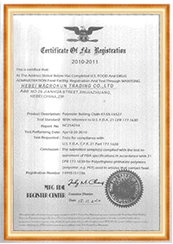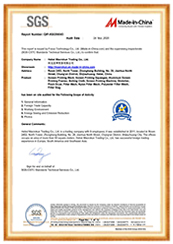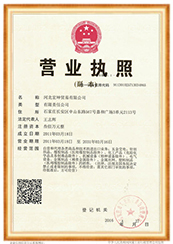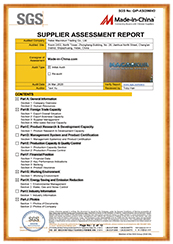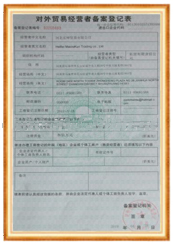Micron nylon mesh screens are a popular choice for a variety of industries, including food and beverage, pharmaceuticals, and electronics. These screens are used for filtering, straining, and separating particles of different sizes. When it comes to choosing the right micron nylon mesh screen for your needs, there are several factors to consider. In this article, we will compare different micron nylon mesh screens and discuss their pros and cons to help you make an informed decision.
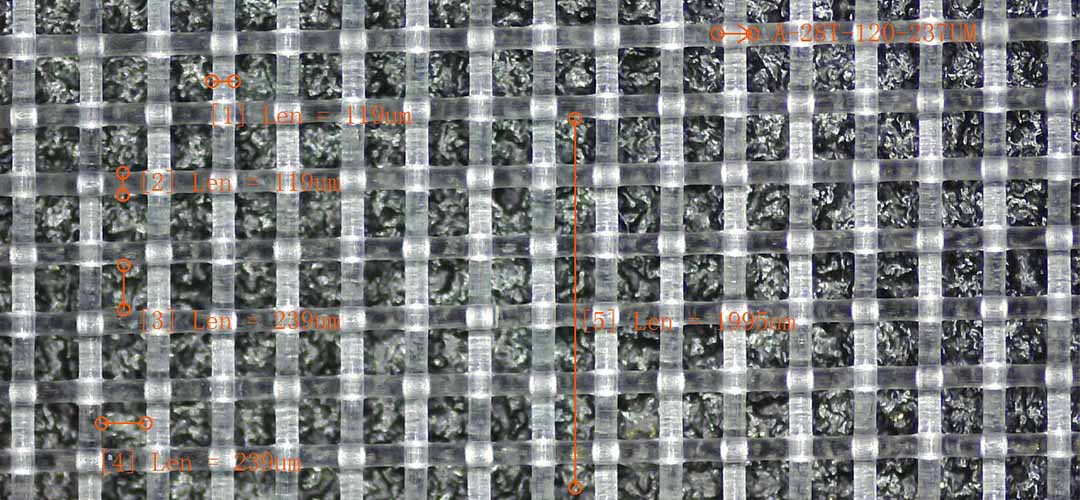
One of the main advantages of micron nylon mesh screens is their durability. These screens are made from high-quality nylon material that is resistant to tears and abrasions. This means that they can withstand heavy use and last for a long time without needing to be replaced. Additionally, micron nylon mesh screens are easy to clean and maintain, making them a cost-effective option for businesses looking to save on maintenance costs.
Another benefit of micron nylon mesh screens is their versatility. These screens come in a wide range of micron sizes, allowing you to choose the right screen for your specific needs. Whether you need a fine mesh screen for filtering out small particles or a coarse mesh screen for straining larger particles, there is a micron nylon mesh screen that will meet your requirements. This versatility makes micron nylon mesh screens a popular choice for businesses that need to filter or strain a variety of materials.
Despite their many advantages, micron nylon mesh screens also have some drawbacks. One of the main disadvantages of these screens is their limited temperature resistance. Nylon material is not as heat-resistant as other materials, such as stainless steel or polyester, which means that micron nylon mesh screens may not be suitable for high-temperature applications. If you need a screen that can withstand extreme temperatures, you may need to consider other options.
Another potential downside of micron nylon mesh screens is their susceptibility to chemical damage. While nylon is a durable material, it can be damaged by certain chemicals, solvents, and acids. If your business works with corrosive materials, you may need to take extra precautions to protect your micron nylon mesh screens from chemical damage. This can add to the overall cost of using these screens and may make them less cost-effective in the long run.
In conclusion, micron nylon mesh screens offer a range of benefits, including durability, versatility, and ease of maintenance. However, they also have some drawbacks, such as limited temperature resistance and susceptibility to chemical damage. When choosing a micron nylon mesh screen for your business, it is important to consider your specific needs and requirements. If you need a durable and versatile screen for filtering or straining materials, micron nylon mesh screens may be the right choice for you. However, if you require a screen that can withstand high temperatures or exposure to harsh chemicals, you may need to explore other options. By weighing the pros and cons of micron nylon mesh screens, you can make an informed decision that meets your business needs.
When it comes to choosing the right micron nylon mesh screen for your specific needs, it’s important to understand the differences in micron sizes. Micron size refers to the size of the openings in the mesh screen, which determines the size of particles that can pass through. The smaller the micron size, the finer the mesh screen and the smaller the particles it can filter out.
Micron sizes typically range from 25 microns to 800 microns, with smaller micron sizes being more suitable for filtering out finer particles. For example, a 25-micron mesh screen is ideal for filtering out very fine particles, while an 800-micron mesh screen is better suited for larger particles.
When choosing a micron nylon mesh screen, it’s important to consider the size of the particles you need to filter out. If you are working with very fine particles, such as in the pharmaceutical or food industry, a smaller micron size, such as 25 or 50 microns, would be more appropriate. On the other hand, if you are filtering out larger particles, such as in the mining or construction industry, a larger micron size, such as 400 or 800 microns, would be more suitable.
It’s also important to consider the flow rate when choosing a micron nylon mesh screen. A smaller micron size will result in a slower flow rate, as the finer mesh screen will restrict the passage of particles. This can be beneficial in applications where a high level of filtration is required, but may not be ideal for applications where a faster flow rate is necessary.
In addition to micron size, it’s important to consider the material of the nylon mesh screen. Nylon is a popular choice for mesh screens due to its durability and resistance to chemicals and abrasion. However, there are different types of nylon mesh screens available, each with its own unique properties.
For example, monofilament nylon mesh screens are made from a single strand of nylon, resulting in a smooth surface that is easy to clean and resistant to clogging. These screens are ideal for applications where a high level of filtration is required, such as in the medical or pharmaceutical industry.
On the other hand, multifilament nylon mesh screens are made from multiple strands of nylon twisted together, resulting in a more porous surface that allows for a higher flow rate. These screens are ideal for applications where a faster flow rate is necessary, such as in the food or beverage industry.
When choosing a micron nylon mesh screen, it’s important to consider both the micron size and the material of the screen to ensure that it meets your specific needs. By understanding the differences in micron sizes and the properties of different types of nylon mesh screens, you can make an informed decision that will help you achieve optimal filtration results.
Micron nylon mesh screens are widely used in various industries for filtration purposes. These screens are known for their ability to effectively separate particles of different sizes, making them an essential tool in many manufacturing processes. However, not all micron nylon mesh screens are created equal. In this article, we will compare the durability and longevity of different micron nylon mesh screens to help you determine which one fits your needs.
When it comes to durability, the thickness of the mesh plays a crucial role. Thicker meshes are generally more durable and can withstand higher pressures and abrasive materials. However, thicker meshes may also reduce the flow rate and efficiency of the filtration process. On the other hand, thinner meshes are more prone to tearing and may not last as long under harsh conditions. Therefore, it is important to strike a balance between durability and performance when selecting a micron nylon mesh screen.
Another factor that affects the durability of micron nylon mesh screens is the type of weave used. There are two common types of weaves: plain weave and twill weave. Plain weave screens have a simple crisscross pattern, making them less prone to snagging and tearing. Twill weave screens, on the other hand, have a more complex pattern that provides better strength and stability. However, twill weave screens may be more susceptible to clogging due to their smaller openings. Therefore, the choice between plain weave and twill weave depends on the specific requirements of your filtration process.
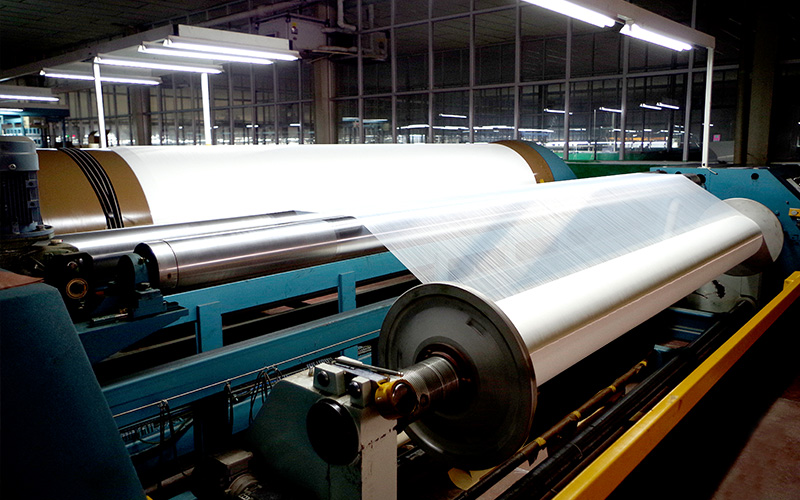
In addition to durability, the longevity of micron nylon mesh screens is also influenced by the material used. Nylon is a popular choice due to its excellent chemical resistance and high tensile strength. However, not all nylon materials are created equal. Some manufacturers use low-quality nylon that may degrade over time, especially when exposed to harsh chemicals or extreme temperatures. It is important to choose a micron nylon mesh screen made from high-quality nylon to ensure long-lasting performance.
Furthermore, the method of screen production can also affect its longevity. Screens that are heat-set during the manufacturing process tend to have better dimensional stability and resistance to stretching. Heat-setting involves subjecting the screen to high temperatures, which helps to lock the fibers in place and prevent them from shifting or distorting. This results in a more durable screen that can withstand repeated use and cleaning without losing its shape or effectiveness.
Lastly, proper maintenance and cleaning are essential for prolonging the lifespan of micron nylon mesh screens. Regular inspection and cleaning can help prevent clogging and ensure optimal performance. It is important to follow the manufacturer’s guidelines for cleaning and avoid using harsh chemicals or abrasive cleaning methods that can damage the screen. By taking good care of your micron nylon mesh screen, you can maximize its longevity and get the most out of your investment.
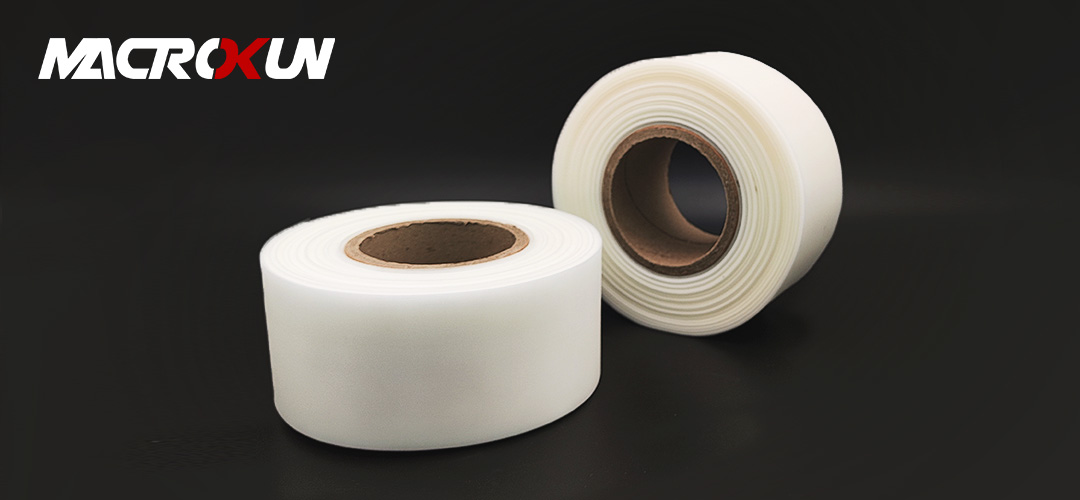
In conclusion, when comparing the durability and longevity of micron nylon mesh screens, it is important to consider factors such as mesh thickness, weave type, material quality, production method, and maintenance. By carefully evaluating these factors, you can select a micron nylon mesh screen that meets your specific needs and provides long-lasting performance. Remember, investing in a high-quality micron nylon mesh screen will ultimately save you time and money in the long run.
Micron nylon mesh screens are widely used in various industries for filtration purposes. These screens are known for their durability, flexibility, and ability to withstand high temperatures. However, with so many options available in the market, it can be challenging to choose the right micron nylon mesh screen for your specific needs. In this article, we will compare different micron nylon mesh screens and help you make an informed decision.
When selecting a micron nylon mesh screen, the first thing to consider is the mesh size. Mesh size refers to the number of openings per linear inch. A higher mesh size indicates smaller openings, while a lower mesh size indicates larger openings. The choice of mesh size depends on the particle size you want to filter. If you are dealing with larger particles, a lower mesh size would be suitable. On the other hand, if you need to filter smaller particles, a higher mesh size would be more appropriate.
Another important factor to consider is the thread diameter. The thread diameter determines the strength and durability of the mesh screen. Thicker threads are more robust and can withstand higher pressures and temperatures. However, thicker threads also result in smaller openings, which may not be suitable for filtering smaller particles. Therefore, it is essential to strike a balance between thread diameter and mesh size to ensure optimal filtration efficiency.
Apart from mesh size and thread diameter, the material of the micron nylon mesh screen is also crucial. Nylon is a popular choice due to its excellent chemical resistance, high tensile strength, and low moisture absorption. However, there are different types of nylon available, such as nylon 6 and nylon 66. Nylon 6 is more affordable and offers good resistance to abrasion and chemicals. On the other hand, nylon 66 is more expensive but provides superior strength and heat resistance. Consider your specific filtration requirements and choose the nylon material accordingly.
In addition to these factors, it is essential to consider the weave type of the micron nylon mesh screen. The weave type determines the openness and flow rate of the screen. There are various weave types available, such as plain weave, twill weave, and Dutch weave. Plain weave is the most common and offers a balanced combination of openness and strength. Twill weave provides better strength and stability, making it suitable for heavy-duty applications. Dutch weave, on the other hand, has a higher density and is ideal for fine filtration.
| Model | Mesh Count (/cm) |
Mesh Count (/inch) |
Thread Dia (um) |
Mesh Opening (um) |
Thickness (um) |
Weight (g/m2) |
| NL4/1950 | 4 | 10 | 550 | 1950 | 1100 | 307 |
| NL5/1500 | 5 | 13 | 500 | 1500 | 1000 | 318 |
| NL6/1267 | 6 | 15 | 400 | 1267 | 800 | 244 |
| NL7/1079 | 7 | 18 | 350 | 1079 | 700 | 218 |
| NL8/900 | 8 | 20 | 350 | 900 | 700 | 249 |
| NL9/861 | 9 | 23 | 250 | 861 | 500 | 143 |
| NL9/811 | 9 | 23 | 300 | 811 | 600 | 206 |
| NL10/750 | 10 | 25 | 250 | 750 | 500 | 159 |
| NL10/700 | 10 | 25 | 300 | 700 | 600 | 229 |
| NL12/583 | 12 | 30 | 250 | 583 | 500 | 191 |
| NL12/533 | 12 | 30 | 300 | 533 | 600 | 274 |
| NL14/514 | 14 | 36 | 200 | 514 | 340 | 142 |
| NL16/425 | 16 | 40 | 200 | 425 | 340 | 160 |
| NL20/350 | 20 | 50 | 150 | 350 | 255 | 113 |
| NL20/300 | 20 | 50 | 200 | 300 | 340 | 200 |
| NL24/267 | 24 | 60 | 150 | 267 | 255 | 135 |
| NL28/237 | 28 | 70 | 120 | 237 | 204 | 101 |
| NL30/213 | 30 | 76 | 120 | 213 | 204 | 110 |
| NL32/213 | 32 | 80 | 100 | 213 | 170 | 80 |
| NL36/178 | 36 | 90 | 100 | 178 | 170 | 90 |
| NL40/150 | 40 | 100 | 100 | 150 | 170 | 100 |
| NL43/153 | 43 | 110 | 80 | 153 | 136 | 70 |
| NL48/128 | 48 | 120 | 80 | 128 | 136 | 77 |
| NL56/119 | 56 | 140 | 60 | 119 | 102 | 50 |
| NL64/96 | 64 | 160 | 60 | 96 | 102 | 58 |
| NL72/89 | 72 | 180 | 50 | 89 | 85 | 45 |
| NL80/75 | 80 | 200 | 50 | 75 | 85 | 50 |
| NL100/57 | 100 | 250 | 43 | 57 | 73 | 46 |
| NL110/48 | 110 | 280 | 43 | 48 | 73 | 52 |
| NL120/48 | 120 | 300 | 35 | 48 | 60 | 37 |
| NL120/40 | 120 | 300 | 43 | 40 | 73 | 55 |
| NL130/42 | 130 | 330 | 35 | 42 | 60 | 40 |
| NL130/34 | 130 | 330 | 43 | 34 | 73 | 61 |
| NL140/36 | 140 | 350 | 35 | 36 | 60 | 43 |
| NL157/25 | 157 | 400 | 43 | 25 | 73 | 74 |
| NL180/20 | 180 | 450 | 39 | 20 | 66 | 68 |
| NL200/15 | 200 | 500 | 39 | 15 | 66 | 76 |
| NL220/10 | 220 | 550 | 39 | 10 | 66 | 84 |
| NL240/5 | 240 | 600 | 39 | 5 | 66 | 91 |
Lastly, consider the overall quality and reputation of the manufacturer. Look for a reputable manufacturer that has a track record of producing high-quality micron nylon mesh screens. Read customer reviews and testimonials to gauge the satisfaction level of previous buyers. A reliable manufacturer will provide detailed specifications and technical support to help you choose the right micron nylon mesh screen for your specific needs.
In conclusion, choosing the right micron nylon mesh screen requires careful consideration of factors such as mesh size, thread diameter, material, weave type, and manufacturer reputation. Assess your filtration requirements and select a screen that offers the optimal combination of these factors. By doing so, you can ensure efficient and effective filtration in your industry or application.
Pre: Why Nylon Mesh for Sieves Is a Must-Have for Laboratory and Industrial Use
Next: Nylon Mesh for Filter Screens vs. Metal Screens: Which One Is Better?

MACROKUN has established long-term and stable cooperative relations with many transportation companies such as China Post, DHL, FEDEX, USPS, UPS, etc. Of course, MACROKUN can also provide air and sea transportation. The powerful logistics system enables all MACROKUN'S Printing Mesh, Filter Mesh and Filter Bags and so on to be easily and efficiently transported to any place. For quotes and inquiries, please email our sales team.
